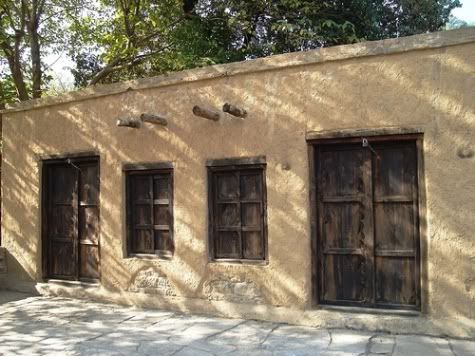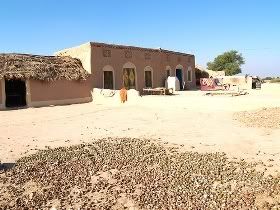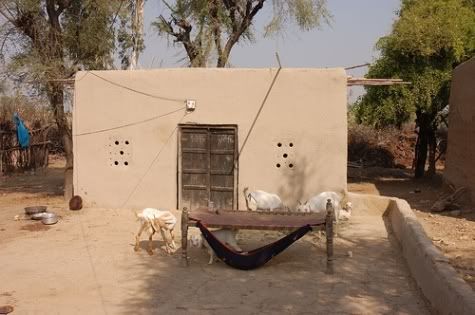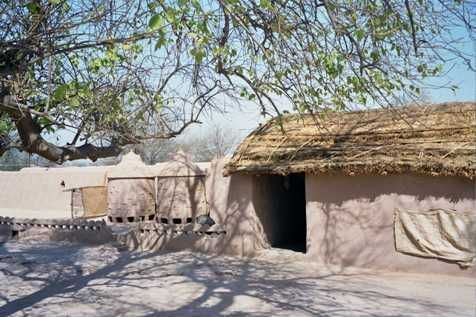The future lies in mud architecture. Though this sweeping statement may sound prehistoric, but it is very relevant to modern times. Building living spaces with mud is a tradition dating back to the start of civilizations. Some excellent examples from the Great Mosque – the world’s largest mud building and UNESCO’s World Heritage site to the oldest surviving mud specimens found in the Harappa Pakistan, show the continuation and importance of mud buildings.

Having grown up in a mud house myself (before I moved to urban centre), mud buildings have a special place rooted deep into my cultural consciousness and this personal bond encourages a more intimate relationship between me and the mud as the material transformed from formlessness to form. That is the reason why I am interested in mud architecture and I see its bright future in Pakistan.
Why use Mud? Mud – a mixture of earth and water – is economical, practical, functional and attractive. It is easy to work with, and it takes decoration well. Mud is especially useful in humid and hot climates like we have in Pakistan. Mud is a natural material that is found in abundance, especially where other building materials such as bricks, stone or wood are scarce due to affordability and or availability. In Pakistan, use of mud has evolved from local necessity. Which is why the use of extremely sticky mud deposited found along river banks or elsewhere in Pakistan combined with appropriate technology makes an excellent material to build functional and climate friendly buildings.
 Work has already started and many experts are critically analysing the more purposeful use of mud as a building material. Dr Gus Van Beek of the Department of Anthropology, National Museum of Natural History is working on a book in which he is examining methods of construction and varieties of designs in contemporary as well as ancient structures found at many places. Dr Gus Van Beek’s research started when he uncovered arch and vault construction at Tel Jemmeh, Israel. Dr Gus Van Beek is covering major types of construction in Morocco, Egypt, Yemen, Israel, Syria, Iraq, Iran, India and Pakistan.
Work has already started and many experts are critically analysing the more purposeful use of mud as a building material. Dr Gus Van Beek of the Department of Anthropology, National Museum of Natural History is working on a book in which he is examining methods of construction and varieties of designs in contemporary as well as ancient structures found at many places. Dr Gus Van Beek’s research started when he uncovered arch and vault construction at Tel Jemmeh, Israel. Dr Gus Van Beek is covering major types of construction in Morocco, Egypt, Yemen, Israel, Syria, Iraq, Iran, India and Pakistan.
At local level, Society for the Promotion of Art and Culture (SPARC), registered in Lahore since 1994, is undertaking the task of revival of much needed mud architecture in Pakistan. SPARC planning to hold workshops at different art and architecture institutions in order to restart the traditional building with mud in rural as well as urban areas of Pakistan. These workshops will not only create awareness and initiate a thought process at grass roots level but will also train SPARC employees in mud architecture. Dr Norbert Pintsch from Senior Expert Service (Bonn, Germany) is planning to present new techniques of mud building to adapt the construction technique mixed with appropriate technology in Pakistan.

Prof Dr Norbert Pintsch is an experienced architect by profession and mud enthusiast by choice. Since completing first building project as an architect at the age of 18, Prof Dr Norbert Pintsch has been in various activities as an architect and civil engineer all his life. One of the best starting point for Prof Dr Norbert Pintsch may be a mud building that stands in Peerzada Festival Area, Green Acre, Lahore. Renowned Pakistani architect like Ghayyoor Obaid are also interested in mud architecture. Any other example that I know of is remains of Sher Shah Suri built mud fort in historic village Sher Ghar near Okara.

The mud architecture is a great resource that focuses on architecture constructed of mud brick, rammed earth, compressed earth block and other methods of earthen construction. The proliferation of the concept to use mud and improved techniques in order to raise the level of living in the population is a very welcome idea and we in Pakistan need that. This can go a long way not only in the form of changing the look of population centres, rural as well as urban, but also in solving environmental problems and problems related to the use of energy and other finite resources.
A version of this post also appeared in the daily Nation
Photo Credits: 1. Alana McConnon; 2. Qaisar Raja Ghaffar; 3. It’s a Sorry Lorry, Morry



















































Thank you for posting this article. Please find more about urban dwellings in our climate (the article below is about a house in Gurgaon, just outside Delhi) that are made of mud and operate at 10% of the electricity cost of a home made of cement and brick:
http://www.business-standard.com/india/storypage.p hp?autono=320533
Also, mud/adobe/rammed earth constructions can be built as high as 4 floors, like in Morocco. They last for centuries. Even in the rain. They have much better heat properties than cement and brick and reduce the operating costs of a dwelling.
Some new technologies get the mud/adobe/rammed earth polished to look like marble, so there’s no longer that “village home” feel to a place.
I appreciate your article very much, there are three brilliant Architects when it comes to mud brick houses and sustainability that are great examples for the future of Pakistan mud buildings.
1. Hasan Fathy, a legend and re-inventor of mud houses. His basic principles quoted from the article below:
-Belief in the primacy of human values in architecture
-Importance of a universal rather than a limited approach
-Use of appropriate technology
-Need for socially oriented, cooperative construction techniques
-The essential role of tradition
-The re-establishment of national cultural pride through the act of building
http://www.islamonline.net/servlet/Satellite?c=Art icle_C&cid=1158658335452&pagename=Zone-English-Art Culture%2FACELayout
2. Samuel Mockebee – Rural Studio
http://archrecord.construction.com/features/aiaAwa rds/04mockbee-1.asp
3. Nader Khalili – Calearth
http://www.calearth.org/naderkha.htm
Thanks for the great article. Specially the pictures. I like the one with goats and child in “jhlungi”.
There are a number of nice designs of houses made from stacked hay straw and mud available online. The only difference is that in the US, treated wood, stucco (synthetic mud) and a variety of sealants make them last just as long as the regular lumber house. These materials also do not encourage termites or other bugs…
Some alternate life style websites also list the volunteers ready to visit and setup a hut for anyone interested..
If stucco is manufactured in Pakistan, it will eliminate the problem of mud washing out during rain… Plus, the Adobe style is really attractive…
There is a lot of to said for mud. Actually it is catching on in many parts of the world and in pakistan there is also weather reasons to consider it. Thank you for this very insightful piece.